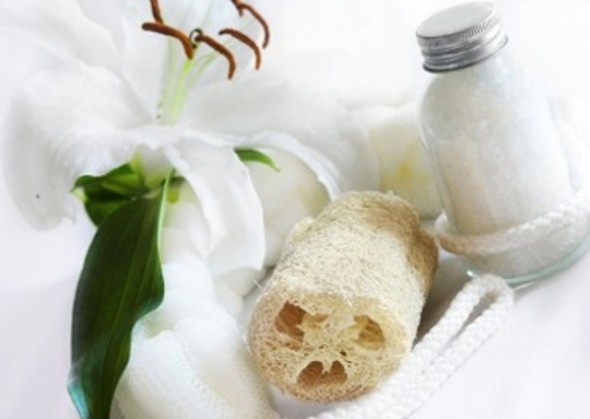- Image Courtesy of Life & Beauty Weekly
When it comes to your skin, you may think that lotion is enough to keep it soft, smooth and clear of flakes. Unfortunately, lotion alone may not always get the job done.
As we age, our skin naturally becomes drier. And harsh elements like the sun, wind and low humidity, not to mention stress, can compromise its ability to hold on to moisture, says Vermén Verallo-Rowell, M.D., a diplomate and fellow of the American Academy of Dermatology and American Society of Dermatopathology.
Thankfully, it takes just a few simple tweaks to your routine to enhance your skin’s ability to hold in moisture and win the battle against dryness. Try these dermatologist tips for trapping moisture into the skin of your face, hands and body.
- Exfoliate Dry, Dead Skin Cells
A buildup of dry, dead cells on the skin’s surface can block the water in moisturizers from fully penetrating, says Dr. Verallo-Rowell. Look for a mild facial scrub or cleanser that contains soft, round synthetic beads, and gently exfoliate once or twice a week. For your body, use a loofah, sugar scrub or even a washcloth. The light exfoliation buffs away the layer of cells, clearing the way for your lotion to do its job.
- Seal in Hydration
When choosing a lotion for your body, look for such ingredients as dimethicone or plant oils (e.g., coconut or avocado). These will help form an invisible seal on skin, preventing moisture from escaping. “Plant oils, in particular, contain fatty acids that are similar to the skin’s natural lipids,” says Dr. Verallo-Rowell. “So they also help replace the natural oils that are missing in dry skin.” - Apply Lotion After a Shower
The best time to apply cream or lotion: Directly after you shower or wash your face, when skin is slightly damp. (Lightly blot skin dry, leaving some moisture behind.) By doing so, the moisturizer also acts as a sealant, holding that extra water in skin, says Dr. Verallo-Rowell. - Boost Ceramide Levels
For your face, look for lotions that contain niacin or niacinamide, a form of vitamin B-3. The ingredient increases the skin’s moisture from the inside. It works by bolstering the skin’s ceramide levels. Ceramides are lipids that coat individual cells, helping them maintain moisture. A study published in the International Journal of Dermatology found that a cream containing niacinamide moisturized and prevented water loss better than did petrolatum, a form of petroleum jelly and well-known, effective moisturizing agent. - Humidify Indoor Air
Cold temperatures and dry heat means little or no humidity in the air. Result: The air will suck moisture from wherever it can get it, including your skin. Sleeping with a humidifier near your bed helps prevent the hydration drain, keeping you from waking up with flaky and tight-feeling skin, says Dr. Verallo-Rowell. - Take Short Showers
A long steamy shower may feel great in the moment, but don’t be seduced by the heat: It’s setting you up for dry, flaky, itchy skin later. Lengthy — and hot — shower sessions break down and wash away the natural lipids on the skin’s surface. Then, as the water evaporates off skin, it can draw out moisture from deeper within the skin, causing you to feel especially parched, says Neil Sadick, M.D., a dermatologist in New York City. - Wear Gloves
Whether you’re washing dishes, cleaning the bathroom or doing some other chore, always don rubber gloves to protect vulnerable hand skin from harsh cleaning agents. Household cleaners contain degreasing chemicals that, while useful for a shipshape home, can strip your skin and allow moisture to escape.Also try applying a thick coat of hand cream before putting on the gloves. Occluding moisturizers with rubber or even cotton gloves help them penetrate better. Aside from making your handshake softer, this will also help hands look younger. Because hands are one of the first areas to show signs of aging, if they’re dry and flaky, wrinkles may look even more pronounced, says Dr. Sadick. - Say Sayonara to Soap
Most solid bars have a high pH (between 8 and 9). This may disrupt the natural proteins in skin, which have a low, more acidic pH of about 4, says Dr. Verallo-Rowell. This compromises the skin’s protective barrier, allowing moisture to escape and opening the door for irritation.Instead, opt for creamy, non-soap cleansers for both face and body. They sport a lower pH and usually deposit moisturizing ingredients while breaking down dirt.
About Author: Robin Immerman Gruen has been a beauty editor at Parents, Seventeen and Shape. Now a freelance writer and editor, she has written for American Way, Parents, Chicago Parent and Real Simple, plus the Web sites Beauty Blitz, Total Beauty, StyleChicago, and Glossed and Found. She has previously contributed to Life & Beauty Weekly.

















